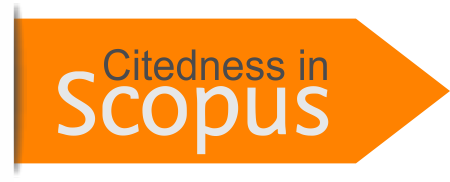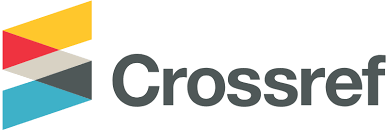Designing Enterprise Architecture Using TOGAF Architecture Development Model (Case Study: BLC Course Institutions)
Abstract
Full Text:
PDFReferences
Cabrera, A., Abad, M., Jaramillo, D., Gómez, J., & Verdum, J. C. (2016). Definition and implementation of the Enterprise Business Layer through a Business Reference Model, using the architecture development method ADM-TOGAF. In Trends and Applications in Software Engineering (pp. 111-121). Springer, Cham.
Hasibuan, M. S., Purnomo, H., & Agharina, M. (2020, December). An Enterprise Architecture Plan for Training Center of IIB Darmajaya. In Proceeding International Conference on Information Technology and Business (pp. 147-157).
Hermawan, R. A., & Sumitra, I. D. (2019). Designing Enterprise Architecture Using TOGAF Architecture Development Method. In IOP Conference Series: Materials Science and Engineering (Vol. 662, No. 4, p. 042021). IOP Publishing.
Kotusev, S., Kurnia, S., Taylor, P., & Dilnutt, R. (2020). Can Enterprise Architecture Be Based on the Business Strategy?. In Proceedings of the 53rd Hawaii International Conference on System Sciences.
Nama, G. F., & Kurniawan, D. (2017). An enterprise architecture planning for higher education using the open group architecture framework (togaf): Case study University of Lampung. In 2017 Second International Conference on Informatics and Computing (ICIC) (pp. 1-6). IEEE.
Negara, J. G. P., & Emanuel, A. W. R. (2020). Enterprise Architecture Design Strategies for UGK Using TOGAF ADM. In 1st Borobudur International Symposium on Humanities, Economics and Social Sciences (BIS-HESS 2019) (pp. 491-495). Atlantis Press.
Puspitasari, D. D., & Kamisutara, M. (2021). Enterprise Architecture Planning Using TOGAF Framework Case Study Dampit Village. IJEEIT International Journal of Electrical Engineering and Information Technology, 4(2), 66-75.
Rusli, D., & Bandung, Y. (2017). Designing an enterprise architecture (EA) based on TOGAF ADM and MIPI. In 2017 International Conference on Information Technology Systems and Innovation (ICITSI) (pp. 38-43). IEEE.
Saluky, S. (2017). Development of enterprise architecture model for smart city. ITEJ (Information Technology Engineering Journals), 2(2), 12-18.
Ulmi, U., Putra, A. P. G., Ginting, Y. D. P., Laily, I. L., Humani, F., & Ruldeviyani, Y. (2020). Enterprise architecture planning for enterprise university information system using the TOGAF architecture development method. In IOP Conference Series: Materials Science and Engineering (Vol. 879, No. 1, p. 012073). IOP Publishing.
Wiranti, Y. T., Khaerunnisa, N., Atrinawati, L. H., & Daningrum, V. (2020). Enterprise Architecture Planning with TOGAF ADM for Balikpapan College of Economics. In Sriwijaya International Conference on Information Technology and Its Applications (SICONIAN 2019) (pp. 586-598). Atlantis Press.
DOI: https://doi.org/10.46336/ijeer.v3i1.385
Refbacks
- There are currently no refbacks.
Copyright (c) 2023 Sukiman Sukiman, Zulganef Zulganef
Published By:
IJEER: Jalan Riung Ampuh No. 3, Riung Bandung, Kota Bandung 40295, Jawa Barat, Indonesia
IJEER Indexed By:
 This work is licensed under a Creative Commons Attribution 4.0 International License.
This work is licensed under a Creative Commons Attribution 4.0 International License.









